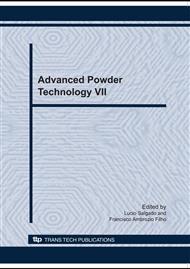p.636
p.641
p.646
p.652
p.658
p.667
p.675
p.681
p.686
Intermediate Oxide Layers for Direct Bonding of Copper (DBC) to Aluminum Nitride Ceramic Substrates
Abstract:
DBC is a process where copper foils are bonded to ceramic substrates for manufacturing hybrid electronic circuits and packages with high power-handling capabilities. For aluminum nitride (AlN) ceramics, a heat-treatment is required to grow an oxide layer to promote the bonding with copper. The oxidation treatment, however, must be conducted in special conditions to avoid the occurrence of severe cracking. In this work, an alternative method is proposed to form an intermediate oxide layers for DBC to AlN substrates. By this method, eutectic powder mixtures (CuO-CaO and CuO-Al2O3 systems) were applied to dense AlN substrates and then heat-treated at 1200 °C for 1 h in air. Different types of AlN ceramics sintered between 1650 and 1700 °C for 4 h in nitrogen atmosphere with additives of the system Y2O3-CaO-SrO-Li2O were investigated. The prepared oxide layers (thickness of ~25 m) presented good microstructural joining with the AlN substrates (characterized by SEM and EDS analysis), and did not affect significantly the thermal conductivity in the working temperature range of electronic devices (~100 to 50 W/m.K determined by laser flash method between 100 and 200 °C) compared to the AlN substrates.
Info:
Periodical:
Pages:
658-663
Citation:
Online since:
October 2010
Price:
Сopyright:
© 2010 Trans Tech Publications Ltd. All Rights Reserved
Share:
Citation:


